Jim Zeigler conducts exit audit of newly closed state agency

On Thursday Governor Kay Ivey abolished the Governor’s Office of Faith-Based and Volunteer Service (also known as Serve Alabama). On Friday, State Auditor Jim Zeigler released the exit audit on the agency. Zeigler’s staff located all state property assigned to the office, which totaled $53,303.32. All 34 items were accounted for in what Zeigler has termed “a perfect audit.” Zeigler said his office received advance notice of the need for an exit audit in the agency and had performed the audit on Wednesday. The exit audit is required by law.
Starbucks chairman questions country’s ‘moral fiber’
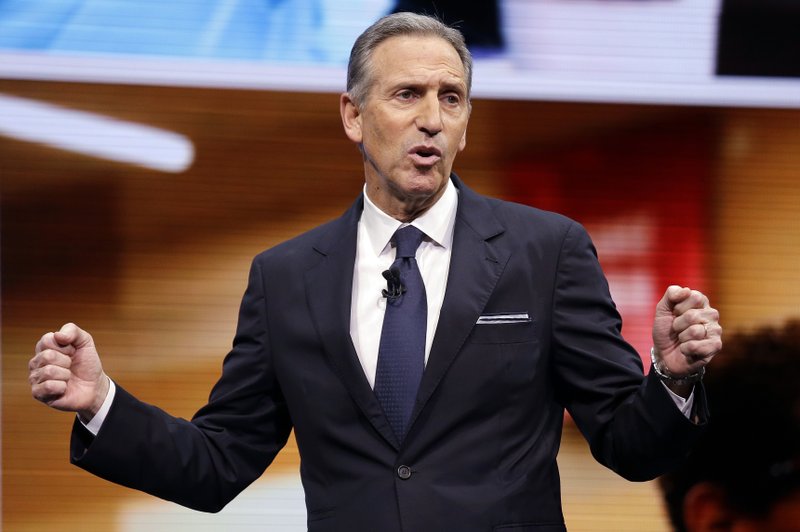
Starbucks chairman Howard Schultz says the events surrounding a white nationalist rally in Charlottesville, Virginia, last weekend have put the “moral fiber” of the country in question. Schultz said at an employee forum in Seattle on Tuesday that he has “profound concern about the lack of character, morality, humanity,” displayed at the rally, according to a recap of the meeting posted on Starbucks’ website. “The moral fiber, the values, and what we as a country have stood for is literally hanging in the abyss,” Schultz told employees. “We are at a critical juncture in American history. That is not an exaggeration. We are at and facing a crucible in which our daily life is being challenged and being questioned about what is right and what is wrong.” A throng of hundreds, mostly white men and many carrying guns, converged on the college town Saturday yelling anti-Semitic and racist slurs and carrying Confederate flags and neo-Nazi and KKK signs. A street fight broke out between them and counter-protesters, and a woman was killed and others injured when a man drove a car into people marching against the rally. After the violence, President Donald Trump was blasted for putting the blame on both sides and saying both sides included “very fine people.” Schultz was not a member of either of Trump’s two panels of business leaders that dissolved Wednesday after several CEOs stepped down in protest of Trump’s comments. And he told his employees Tuesday he’d let the actions and words of the president speak for themselves. “What we witnessed this past weekend … is against every sense of what is right,” he said. “My fear is not only that this behavior is being given permission and license, but its conduct is being normalized to the point where people are no longer hiding their face.” Telling employees he was speaking to them “as an American, as a Jew, as a parent, as a grandparent,” Schultz said it’s hard to remain optimistic about the country’s future “in the midst of such a storm,” but he still is. Starbucks and Schultz have been outspoken on social issues. Republish with permission of The Associated Press.
Democrats risk culture war fight in Charlottesville response

President Donald Trump‘s widely criticized response to white supremacist violence in Virginia has left Democrats in a quandary: how to seize the moral high ground without getting sucked into a politically perilous culture war. Democrats have denounced Trump for blaming “both sides” for deadly protests in Charlottesville, Virginia, and, more recently, for defending Confederate monuments. But the party faces a complex task: While addressing race and history in ways that reflect the party’s values, Democrats risk getting sidetracked from issues like jobs and the economy that resonate with voters ahead of the 2018 midterm election. The party has been looking to answer Trump’s populism by crafting its own middle-class brand, yet Democratic leaders across multiple states now are pushing to take down Old South monuments like the one that ostensibly sparked the events in Charlottesville, and a trio of rank-and-file House Democrats wants to pursue a congressional censure of the president. In interviews this week before his resignation was announced Friday, White House strategist Steve Bannon gleefully suggested Democrats are falling into a trap. “I want them to talk about racism every day,” Bannon told The American Prospect, a liberal magazine. “If the left is focused on race and identity, and we go with economic nationalism, we can crush the Democrats.” Trump himself has called Confederate memorials, most of them actually erected decades after the Civil War, “beautiful statues” that reflect “our nation’s history and culture.” Polls taken after last weekend’s violence offer some evidence backing Bannon’s and Trump’s view. While polls found widespread disgust with white supremacists, a Marist Poll for NPR and PBS found that just 27 percent of adults queried believe Confederate monuments “should be removed because they are offensive.” About two out of three white and Latino respondents said they should remain, as did 44 percent of black respondents. Andrew Young, a Democrat, civil rights leader and former U.N. ambassador, warned this week that the monuments are “a distraction.” He told reporters in Atlanta it is “too costly to refight the Civil War.” Boyd Brown of South Carolina, a former state lawmaker and onetime member of the Democratic National Committee, says Democrats are right to oppose Confederate monuments and criticize Trump’s remarks. “He tweets something crazy, we react – and we’re not wrong,” Brown said. But “we have to talk about a lack of jobs and education in poor districts, voter suppression laws. Ask why Medicaid funding is always the target. And then explain how all those things hurt more than just African-Americans.” Trump upset Democrat Hillary Clinton on the strength of his support from white voters, particularly working-class whites who possessed a combination of economic frustration and racial resentments salved by Trump’s promises of immigration controls, law-and-order and a booming economy. Clinton, meanwhile, concentrated so much on Trump’s deficiencies and outlandish statements that her own policy proposals received less attention. That’s a problem that has beset Trump rivals since he first declared his candidacy: All the attention focused on Trump – even unflattering stories – prevent them from getting out their own messages. Brian Fallon, who was spokesman for Clinton’s campaign, said Democrats shouldn’t let that happen after Charlottesville. “As horrifying as what the president has said is, you have to have an affirmative agenda,” he said. Still, Fallon praised Democratic efforts to keep Trump and Republicans on the defensive over the president’s response – even if it doesn’t help them politically. “Sometimes it’s important to take a stand regardless of the electoral impacts,” he said, noting that Clinton delivered a speech last year warning of white nationalists’ rise alongside Trump’s campaign. Democrats have tried various tactics to press the Charlottesville issue. Besides the push to censure Trump and remove monuments, they are planning voter organization drives across the United States. Andrew Gillum, the mayor of Tallahassee, Florida, and candidate for governor, is among the Democrats calling for monuments to be moved to museums or cemeteries. Gillum, who is black, says Democrats must argue “these monuments have been weaponized. We can’t pretend that didn’t happen.” The issue is reminiscent of South Carolina’s decision to remove the Confederate battle flag from statehouse grounds in 2015 after a white gunman killed nine people at a historic black church in Charleston. Then-Gov. Nikki Haley, a Republican who is now Trump’s United Nations ambassador, declared the flag untenably divisive after the wide distribution of photos showing the killer clutching it. “She was focused on leading the state through a grieving process so it could begin healing,” recalls Rob Godfrey, one of her top aides at the time. But Godfrey notes Haley never considered jettisoning other Old South relics. “That was going to drive people apart,” Godfrey says. Republish with permission of The Associated Press.
Board of Education to discuss State Superintendent Michael Sentance’s contract

The Alabama State Board of Education has scheduled a meeting to discuss the superintendent’s contract weeks after board members gave him a low marks during a performance review. The board is scheduled to meet Aug. 23. On Friday morning the previously released agenda was modified to include an item to discuss superintendent Michael Sentance’s contract under the “New Business” section of the agenda. A spokeswoman for the Department of Education said she has no further details about the updated agenda item.
SPLC names 917 “hate groups” across country, 27 in Alabama
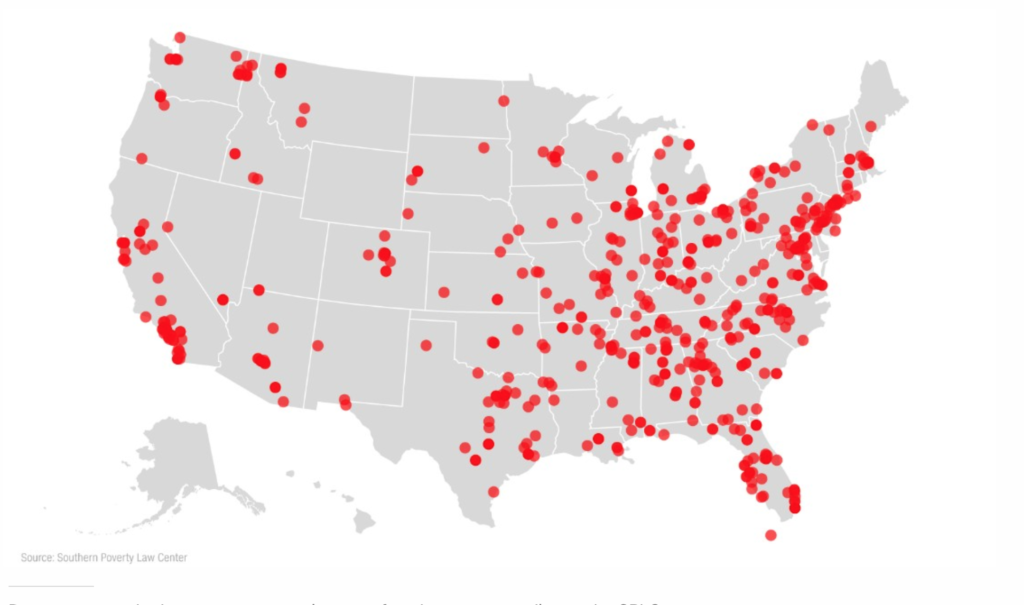
At least 27 “hate groups” are operating in Alabama, according to Birmingham’s Southern Poverty Law Center (SPLC), a non-profit that claims it is “dedicated to fighting hate and bigotry and to seeking justice for the most vulnerable members of our society.” The center has various categories for the 27 groups, which are part of 917 designated groups nationwide, like Neo-Nazis, White Nationalists, Racist Skinheads, Anti-Immigrant, Anti-LGBT and Black Separatists among other categories. The list is compiled as part of the Hatewatch project and designates a hate group as an organization with “beliefs or practices that attack or malign an entire class of people, typically for their immutable characteristics.” “Over the course of a year, we have a team of investigators that scours the internet for racist publications and real world activities to find out which groups exist, which groups are still active and which groups come along,” said Ryan Lenz, a senior investigative reporter for the SPLC’s Hatewatch project. But not everyone agrees with the SPLC’s “hate” classification of the 917 groups. Some critics of the SPLC say the group’s activism biases how it categorizes certain groups. Many mainstream conservative groups, such as the Family Research Council, the Pacific Justice Institute and the Alliance Defending Freedom were put on the SPLC list. “Why is the Southern Poverty Law Center doing this? It’s simple. They want to vilify and isolate anyone that doesn’t agree with their very extremist leftist policy and ideology,” Brad Dacus president of the Pacific Justice Institute, which specializes in religious-liberty cases, told CNN. “This isn’t about defending civil rights; this is about attacking civil rights.” Data for the “Hate Map” list was compiled using hate group publications and websites, citizen and law-enforcement reports, sources from the field and news reports, the SPLC says.
Steve Bannon leaving White House
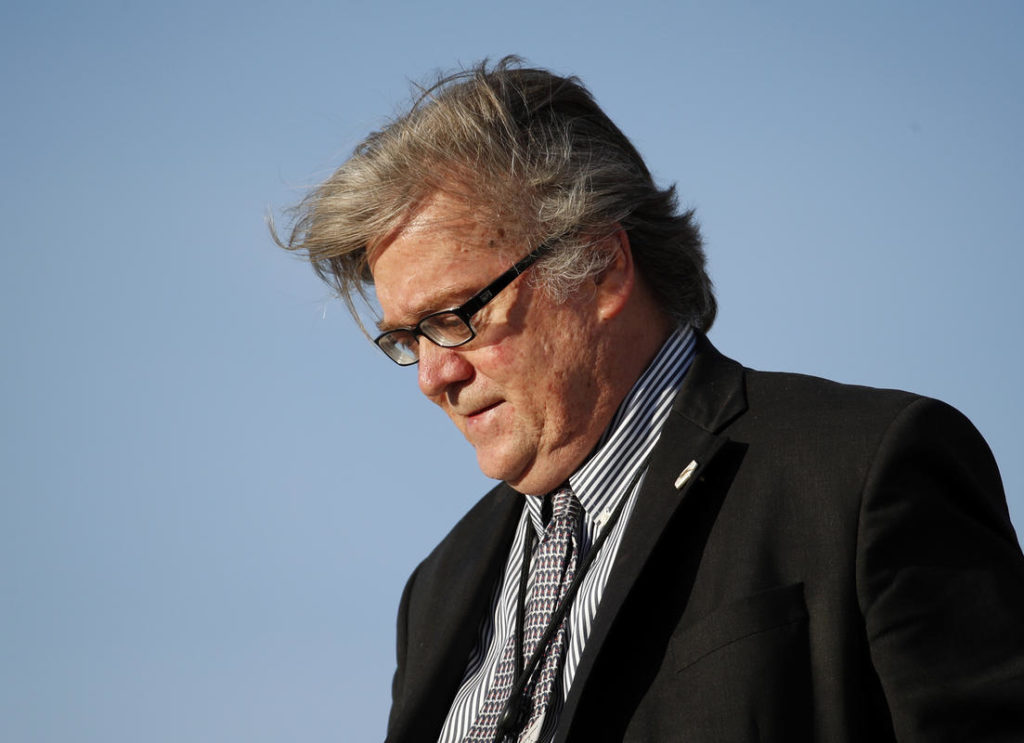
White House chief strategist Steve Bannon is leaving his White House post. That’s according to two people familiar with the decision who demanded anonymity because they were not authorized to discuss private conversations. Bannon was a key adviser to President Donald Trump’s general election campaign and has been a forceful but contentious presence in a divided White House. The former leader of conservative Breitbart News pushed Trump to follow through with his campaign promises. But he’s also sparred with some of Trump’s closest advisers, including son-in-law Jared Kushner. “Bannon had one hell of a run,” Matt Drudge tweeted in response. Bannon had one hell of a run… — MATT DRUDGE (@DRUDGE) August 18, 2017 Republished with permission of The Associated Press.
Rex Tillerson condemns hate speech, says bigotry is un-American

Secretary of State Rex Tillerson is condemning hate speech and bigotry as un-American and antithetical to the values the U.S. was founded on and promotes abroad. In his most extensive comments on race and diversity since last weekend’s violence in Charlottesville, Virginia, Tillerson on Friday called racism “evil.” He said freedom of speech is sacrosanct but that those who promote hate poison the public discourse and damage the country they claim to love. Speaking to interns and young minority staffers at the State Department, Tillerson pledged to diversify the overwhelmingly white ranks of the senior diplomatic corps. He also sought to calm fears he might eliminate programs designed to recruit minorities. He said an earlier suspension of the programs was only temporary. Republish with permission of The Associated Press.
Donald Trump approves plan to create independent cyber command
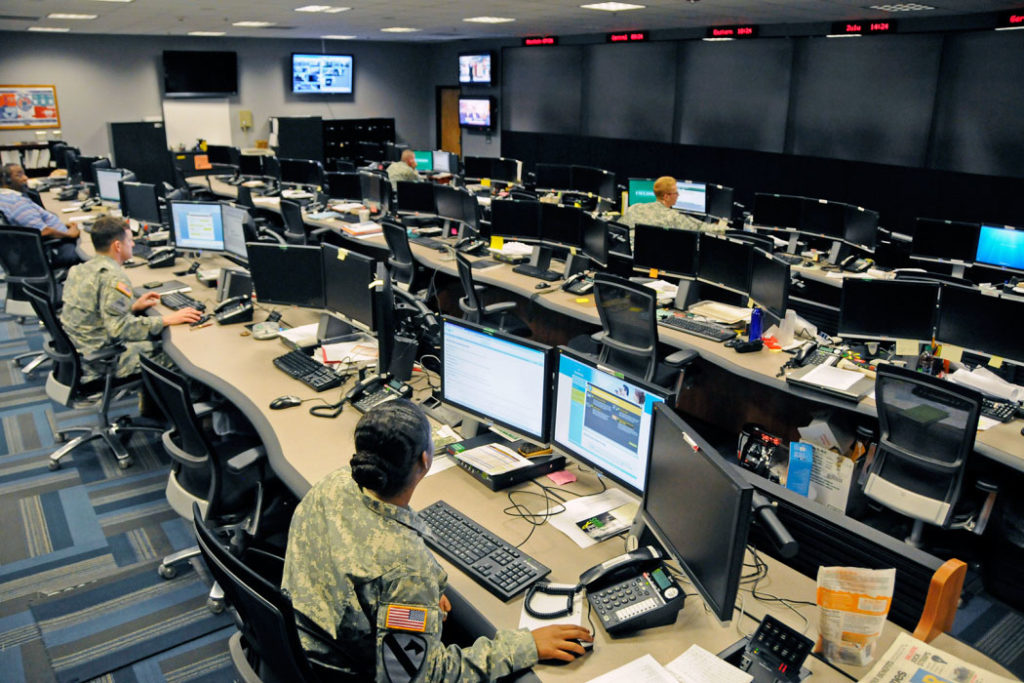
President Donald Trump has approved a long-delayed Pentagon plan to create an independent and more aggressive cyber command in order to beef up cyberwar operations against the Islamic State group and other foes. The White House announcement Friday means U.S. Cyber Command may eventually be split off from the intelligence-focused National Security Agency. For now, Trump has agreed to raise the stature of Cyber Command within the military and give it more autonomy. “This new Unified Combatant Command will strengthen our cyberspace operations and create more opportunities to improve our nation’s defense,” Trump said in a written statement. “The elevation of United States Cyber Command demonstrates our increased resolve against cyberspace threats and will help reassure our allies and partners and deter our adversaries.” Making cyber an independent military command will put the fight in digital space on the same footing as more traditional realms of battle on land, in the air, at sea and in space. The move reflects the escalating threat of cyberattacks and intrusions from other nation states, terrorist groups and hackers, and comes as the U.S. faces ever-widening fears about Russian hacking following Moscow’s efforts to meddle in the 2016 American election. The goal is to give Cyber Command more autonomy, freeing it from any constraints that stem from working alongside the NSA, which is responsible for monitoring and collecting telephone, internet and other intelligence data from around the world – a responsibility that can sometimes clash with military operations against enemy forces. Sen. John McCain praised the move, saying the administration must now develop a clear policy and strategy for deterring and responding to cyber threats. Kenneth Rapuano, the assistant secretary of defense for homeland defense, told reporters Friday that elevating the status of Cyber Command will give it a bigger voice in advocating for resources to fight cyber threats. The plan has been languishing since last year when then-Defense Secretary Ash Carter sent a proposal to President Barack Obama to make Cyber Command an independent military headquarters and break it away from the NSA. At the time, he believed that the NSA’s desire to collect intelligence was preventing the military from eliminating IS’ ability to raise money, inspire attacks and command its widely dispersed network of fighters. After Trump’s inauguration, officials said Defense Secretary Jim Mattis endorsed much of the plan. But debate over details dragged on for months. Officials say the Pentagon plan sent to the White House calls for Army Lt. Gen. William Mayville to be nominated to lead Cyber Command, although that has not been announced. Leadership of the NSA could be turned over to a civilian. The U.S. has long operated quietly in cyberspace, using it to collect information, disrupt enemy networks and aid conventional military missions. But as other nations and foes expand their use of cyberspying and attacks, the U.S. is determined to improve its ability to incorporate cyber operations into its everyday warfighting. The NSA, however, has a great deal of expertise, and officials acknowledge it will take some time for a more independent Cyber Command to get up to speed. Until then, Cyber Command and NSA will operate under a single, “dual-hatted” military commander. The cyber operation currently relies on the NSA’s expertise, staff and equipment. The two highly secretive organizations, based at Fort Meade, Maryland, have been under the same four-star commander since Cyber Command’s creation in 2009. But the Defense Department has been agitating for a separation, perceiving the NSA and intelligence community as resistant to more aggressive cyberwarfare, particularly after the Islamic State’s transformation in recent years from an obscure insurgent force into an organization holding significant territory across Iraq and Syria and with a worldwide recruiting network. While the military wanted to attack IS networks, intelligence objectives prioritized gathering information from them, according to U.S. officials familiar with the debate. They weren’t authorized to discuss internal deliberations publicly and requested anonymity. Cyber Command was created by the Obama administration to address threats of cyber espionage and other attacks. It was set up as a sub-unit under U.S. Strategic Command to coordinate the Pentagon’s ability to conduct cyberwarfare and to defend its own networks, including those that are used by combat forces in battle. Officials originally said the new cyber effort would likely involve hundreds, rather than thousands, of new employees. Since then, the command has grown to more than 700 military and civilian employees. The military services also have their own cyber units, with a goal of having, by Sept. 30, 2018, a total of 133 fully operational teams with as many as 6,200 personnel. Republish with permission of The Associated Press.
Donald Trump defends Confederate statues, berates his critics
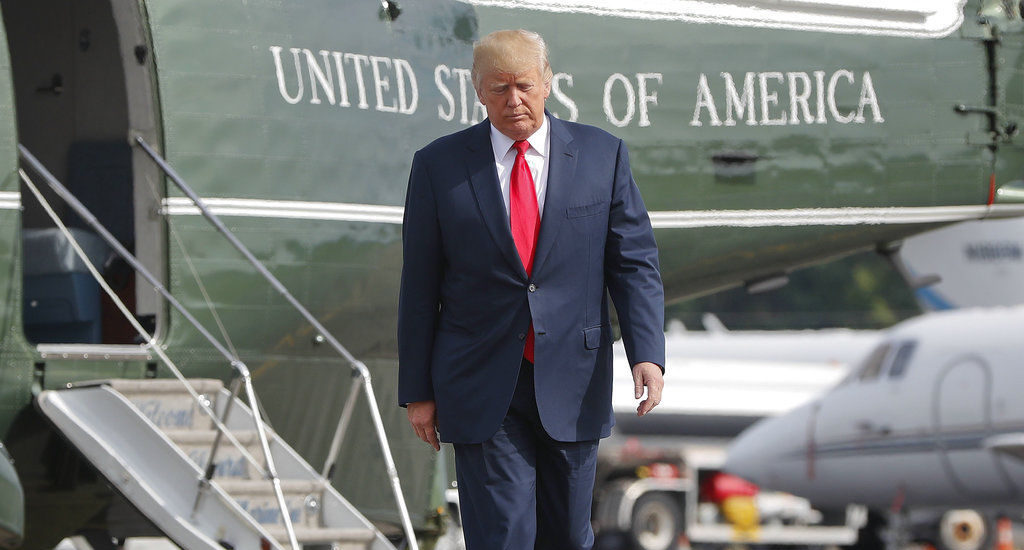
With prominent Republicans openly questioning his competence and moral leadership, President Donald Trump burrowed deeper into the racially charged debate over Confederate memorials and lashed out at members of his own party in the latest controversy to engulf his presidency. Out of sight but still online, Trump tweeted his defense of monuments to Confederate icons – bemoaning rising efforts to remove them as an attack on America’s “history and culture.” And he berated his critics who, with increasingly sharper language, have denounced his initially slow and then ultimately combative comments on the racial violence at a white supremacist rally last weekend in Charlottesville, Virginia. Trump was much quicker Thursday to condemn violence in Barcelona, where more than a dozen people were killed when a van veered onto a sidewalk and sped down a busy pedestrian zone in what authorities called a terror attack. He then added to his expression of support by reviving a debunked legend about a U.S. general subduing Muslim rebels a century ago in the Philippines by shooting them with bullets dipped in pig blood. “Study what General Pershing of the United States did to terrorists when caught. There was no more Radical Islamic Terror for 35 years!” Trump tweeted. Trump’s unpredictable, defiant and, critics claim, racially provocative behavior has clearly begun to wear on his Republican allies – and also has upset the mother of Heather Heyer, the young woman killed in the Charlottesville violence. Heyer’s mother, Susan Bro, told ABC’s “Good Morning America” on Friday that she initially missed the first few calls to her from the White House. But she said “now I will not” talk to the president after a news conference in which Trump equated violence by white supremacists at the rally with violence by those protesting the rally. Heyer was killed when a driver rammed a car into a crowd of demonstrators protesting the white nationalists. Trump found no comfort in his own party, either. Tennessee Sen. Bob Corker, whom Trump had considered for a Cabinet post, declared Thursday that “the president has not yet been able to demonstrate the stability nor some of the competence that he needs to” in dealing with crises. And Sen. Dan Sullivan of Alaska tweeted, “Anything less than complete & unambiguous condemnation of white supremacists, neo-Nazis and the KKK by the @POTUS is unacceptable. Period.” Sen. Tim Scott of South Carolina said Trump’s “moral authority is compromised.” Trump, who is known to try to change the focus of news coverage with an attention-grabbing declaration, sought to shift Thursday from the white supremacists to the future of statues. “You can’t change history, but you can learn from it,” he tweeted. “Robert E. Lee. Stonewall Jackson – who’s next, Washington, Jefferson? So foolish. … “Also the beauty that is being taken out of our cities, towns and parks will be greatly missed and never able to be comparably replaced!” “Sad to see the history and culture of our great country being ripped apart with the removal of our beautiful statues and monuments,” he tweeted. Trump met separately Thursday at his golf club in nearby Bedminster with the administrator of the Small Business Administration and Florida Gov. Rick Scott. Trump also prepared for an unusual meeting Friday at the Camp David presidential retreat in Maryland with his national security team to discuss strategy for South Asia, including India, Pakistan and the way forward in Afghanistan. Vice President Mike Pence cut short a long-planned Latin America tour to attend. Before the trip to Camp David, Trump tweeted Friday morning that “Radical Islamic Terrorism must be stopped by whatever means necessary!” In a separate tweet, he added that the Department of Homeland Security and law enforcement are “on alert & closely watching for any sign of trouble.” Though out of public view for two consecutive days, Trump sought to make his voice heard on Twitter as he found himself increasingly under siege and alone while fanning the controversy over race and politics toward a full-fledged national conflagration. He dissolved two business councils Wednesday after the CEO members began quitting, damaging his central campaign promise to be a business-savvy chief executive in the Oval Office. And the White House said Thursday that it was abandoning plans to form an infrastructure advisory council. Two major charities, the Cleveland Clinic and the American Cancer Society, announced they are canceling fundraisers scheduled for Trump’s resort in Palm Beach, Florida, amid the continuing backlash over Trump’s remarks. And the CEO of 21st Century Fox, James Murdoch, has denounced racism and terrorists while expressing concern over Trump’s statements. Murdoch writes that the event in Charlottesville and Trump’s response is a concern for all people. “I can’t believe I have to write this: standing up to Nazis is essential; there are no good Nazis. Or Klansmen, or terrorists.” Murdoch is the son of the company’s co-executive chairman, Rupert Murdoch, a Trump confidant. Meanwhile, rumblings of discontent from Trump’s staff grew so loud that the White House was forced to release a statement saying that Trump’s chief economic adviser wasn’t quitting. And the president remained on the receiving end of bipartisan criticism for his handling of the aftermath of the Charlottesville clashes. On Thursday, he hit back hard – against Republicans. He accused “publicity-seeking” Sen. Lindsey Graham of South Carolina of falsely stating Trump’s position on the demonstrators. He called Arizona Sen. Jeff Flake “toxic” and praised Flake’s potential primary election opponent. Graham said Wednesday that Trump “took a step backward by again suggesting there is moral equivalency” between the marching white supremacists and the people who had been demonstrating against them. Flake has been increasingly critical of Trump in recent weeks. Republished with permission of The Associated Press.
Estimates of North Korea’s nuclear weapons hard to nail down

The U.S. intelligence agencies’ assessments of the size of North Korea’s nuclear arsenal have a wide gap between high and low estimates. Size matters and not knowing makes it harder for the United States to develop a policy for deterrence and defend itself and allies in the region. The secrecy of North Korea’s nuclear program, the underground nature of its test explosions and the location of its uranium-enrichment activity has made it historically difficult to assess its capabilities. Some U.S. assessments conclude North Korea has produced or can make around 30 to 60 nuclear weapons, said two U.S. officials who weren’t authorized to discuss sensitive intelligence matters and demanded anonymity. Such a wide range affects how the U.S. considers addressing the threat. More North Korean bombs could indicate second-strike capacity and then there are questions about how much nuclear firepower the country could mobilize on a moment’s notice. Estimates by civilian experts cloud the picture even further. Most put the arsenal anywhere from a dozen to about 30 weapons. “The bottom line is that we really don’t know how many nuclear weapons they have,” said Bruce Bennett, a senior international and defense researcher at RAND specializing in northeast Asian military issues. “Does it make a difference? Absolutely.” “If North Korea only has a small number – one or two or three – they will not brandish them early in a conflict. If they have 30-plus, they are almost certainly going to consider early use of nuclear weapons in a conflict.” Although remote, the danger of a U.S.-North Korean nuclear confrontation has escalated in recent weeks after Pyongyang’s first successful tests last month of intercontinental ballistic missiles capable of reaching the United States. President Donald Trump has traded bombastic threats with the isolated, communist government. Last week, Trump pledged to answer North Korean aggression with “fire and fury.” He later tweeted that a military solution was “locked and loaded” after leader Kim Jong Un was said to be considering a provocative launch of missiles into waters near the U.S. Pacific island of Guam. If a war were to break out now, North Korea could very well be destroyed. But if North Korea succeeds in building nuclear missiles that can reach the continental U.S., the equation changes. And having more than a few reliable missiles – long-range ones, plus short-range ones that could, for instance, hit South Korea where 28,000 U.S. troops are deployed – enhance North Korea’s leverage. The risk of mass casualties makes any pre-emptive U.S. strikes problematic, as Trump’s own chief strategist recognized in an interview this week. “There’s no military solution, forget it,” Steve Bannon says. “Until somebody solves the part of the equation that shows me that 10 million people in Seoul don’t die in the first 30 minutes from conventional weapons, I don’t know what you’re talking about, there’s no military solution here. They got us.” Seoul is South Korea’s capital. Olli Heinonen, a former deputy director-general at the U.N. nuclear agency, said an arsenal of dozens of weapons might suggest North Korea seeks the capacity to retaliate in a nuclear war. A half-dozen weapons would suggest pure deterrence, said Heinonen, who estimates that North Korea now has enough fissile material for up to 40 weapons – about 10 using plutonium and 30 using uranium. “When you increase the number, it means normally you’re going a little bit more offensive, you plan to have a second-strike capability,” Heinonen said. “Very often it’s from submarines and we see North Korea also working with those.” While size is important, Kelsey Davenport at the Arms Control Association thinks the more pressing problem is stopping Pyongyang from further advancing its nuclear program. “North Korea wants to threaten the United States with a nuclear strike, not actually conduct one, so determining the exact size of North Korea’s stockpile of nuclear warheads is far less urgent than de-escalating tensions,” she said. Sen. Deb Fischer, the Republican chairman of the Senate Armed Services Committee’s panel on strategic forces, said not knowing the size of North Korea’s nuclear program can complicate planning and limit options available to the president. But general principles of deterrence can still be applied, she said. “Kim Jong Un is probably less likely to launch an intercontinental ballistic missile armed with a nuclear weapon at the United States, and suffer our overwhelming retaliation, if he knows our missile defense will prevent his attack from succeeding,” said Fischer, who has called for more funding for homeland missile defense. A 2015 study by the U.S.-Korea Institute at Johns Hopkins University’s School of Advanced International Studies said North Korea could have up to 100 weapons by the end of the decade. That is, if it had 9,000 centrifuges in operation for uranium enrichment and if a light-water reactor, long under construction, finally came online. Under that projection, North Korea would have 58 weapons by 2017, which is comparable to the high end of the intelligence estimates. Still, most experts think the number is far less. “It’s possible that they have discovered an additional uranium enrichment facility that we haven’t known about,” said John Schilling, a consultant with the 38 North website on North Korea at Johns Hopkins. If 60 is the high end, he said, then there “has to be an additional uranium enrichment facility to have produced that level.” Assuming the existence of one or more covert centrifuge facilities, North Korea’s inventory of plutonium and highly enriched uranium might have provided enough fuel for 20 to 25 nuclear devices by the end of last year, according to Siegfried Hecker, a nuclear scientist and former director of the Los Alamos National Laboratory who visited North Korea’s declared centrifuge facility at Nyongbyon in 2010. “Almost all in government believe there are two centrifuge plants,” added David Albright of the Institute for Science and International Security, who views an arsenal of 60 as “unlikely.” Republished with permission of The Associated Press.
Alabama’s unemployment rate drops to 4.5% in July

Alabama’s unemployment rate dropped to 4.5% last month, down from 4.6% in June, according to data released Friday morning by Governor Kay Ivey. “This month, there are fewer people unemployed than there have been in nearly 10 years. This is most welcome news. But even as our unemployment rate continues to decline, we must maintain our work to bring quality, high-paying, high-demand jobs to the state of Alabama. This is a goal I’m committed to, and I intend to continue doing just that,” Ivey said. July’s rate represents 96,251 unemployed persons, compared to 100,187 in June. The number of people counted as unemployed is down 29,931 from this time last year. The last time this measurement was at or below July’s level was in November 2007, when it measured 95,445. “In addition to this being the lowest unemployment rate Alabama has seen since January 2008, we also continue to see yearly growth in many of Alabama’s industries, including manufacturing and construction,” said Secretary of Labor Fitzgerald Washington. “Upticks in manufacturing and construction jobs are indicative of positive economic growth.” Sectors gaining jobs included leisure and hospitality, where employment was up by 12,500, and the professional and business services sector increased by 7,200, the manufacturing sector, which saw a 6,700 increase, and the construction sector, which gained 4,900. Counties with the lowest unemployment rates are: Shelby County: 3.5% Cullman and Baldwin Counties: 4.0% Marshall and Elmore Counties: 4.1% Counties with the highest unemployment rates are: Wilcox County: 13.5% Perry County: 10.8% Clarke County: 10.2%. Major cities with the lowest unemployment rates are: Vestavia Hills: 2.9% Homewood and Hoover: 3.3% Alabaster: 3.4% Major cities with the highest unemployment rates are: Selma: 10.9% Prichard: 9.7% Anniston: 6.5%
Will a Heisman longshot prevail for third straight season?

Preseason longshots the past two years have ended up winning the Heisman Trophy. Last year, Louisville’s Lamar Jackson had 50-1 odds when practices started. Jackson quickly became the odds-on favorite though after his performance in the first three games where he accounted for 18 touchdowns, including 10 rushing, and became the youngest player to win the award. Jackson’s 4,928 yards of total offense is second in Heisman history to the 5,022 yards racked up by BYU’s Ty Detmer in 1990. Two years ago Alabama’s Derrick Henry was at 25-1 in the preseason before setting a Southeastern Conference single-season rushing record with 1,986 yards and becoming just the second running back since 1999 to win. Will this be the third straight season that a dark horse overtakes the field? If you are looking at possible longshots, here are six to keep in mind: DERRIUS GUICE, RB, LSU With Leonard Fournette in the NFL, Guice has the backfield to himself. The 5-foot-11, 218-pound junior still ended up leading the SEC in rushing yards (1,387) and touchdowns (15) despite splitting time with Fournette. Guice had eight carries of 30 yards or more last season, including a 96-yard touchdown against Arkansas that is the longest carry in school history along with an LSU single-game record 285 yards in a Thanksgiving night win over Texas A&M. DERWIN JAMES, S, FLORIDA STATE James missed most of last season due to a knee injury but has been touted as the best defensive player in college football. James (6-3, 211) will draw comparisons to former Michigan standout Jabrill Peppers, who was a Heisman finalist last year. James has been used as a rush end, linebacker and safety on defense, punt return and will see action on offense at wide receiver. He is trying to become the second defensive player to beat the odds. RONALD JONES II, RB, USC There is already plenty of Heisman buzz around the Trojans due to quarterback Sam Darnold, but Jones does have a chance to possibly generate some headlines of his own and possibly upstage Darnold. The 6-0, 200 pound junior running back averaged 6.0 yards per carry and had three touchdown runs of 60 yards or more last year. He won’t get 300-plus carries — which seems to be a prerequisite for consideration from voters — but he can show his ability as a playmaker as both a runner and receiver that could propel him into contention. TRACE McSORLEY, QB, PENN STATE This is like USC in reverse since the running back (Saquon Barkley) is receiving more attention. McSorley, a 6-0, 202-pound junior, could be the best quarterback in the Big Ten. In his first year as the starter last season he threw 25 touchdowns and only five interceptions. He also comes into the season with momentum after big performances in the Big Ten championship game and Rose Bowl. MASON RUDOLPH, QB, OKLAHOMA STATE The senior is not receiving as much attention as Oklahoma’s Baker Mayfield, but Rudolph (6-5, 230) is one of only two Power Five quarterbacks coming back after passing for 4,000 yards. He has one of the more talented receiving duos in the Jalen McCleskey and James Washington. With the Cowboys coming off consecutive 10-win seasons, they could contend for the Big 12 title, which would raise Rudolph’s profile even more. JARRETT STIDHAM, QB, AUBURN Could Stidham take the same path as Cam Newton? Transfer in, flourish under Gus Malzahn’s offense and win the Heisman. The sophomore was one of the top dual-threat quarterbacks when he was recruited by Baylor in 2015 and had immediate success with 1,165 yards passing and 12 touchdowns. Stidham (6-3, 214) transferred to junior college last year after coach Art Briles was fired and could be Auburn’s fourth Heisman finalist in the past eight years. Republished with permission of The Associated Press.


